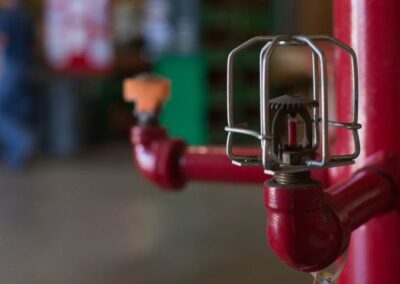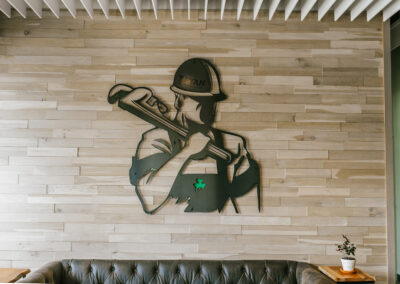How to Prevent Fire Sprinkler Freezing: Winterizing Best Practices
As temperatures drop, the risk of your fire sprinkler system freezing increases. To prevent fire sprinkler freezing, whether you manage a facility in a region with severe winters or milder ones, a proper winterization plan is essential to keep your fire protection system functioning efficiently throughout the colder months.
Fire sprinklers are critical to the safety of your building, but cold weather can cause damage or malfunction if the system isn’t properly prepared. Here’s how to ensure your system is ready for winter.
Step 1: Inspect and Test Your System Before Freezing Temperatures Hit
Regular inspections are your first line of defense against freezing. Schedule a comprehensive inspection and test of your fire sprinkler system before temperatures dip below freezing. Look for signs of leaks, corrosion, or blockages that could become bigger problems as the weather turns colder.
- Dry Sprinkler Systems: Pay special attention to dry systems, as any water left in the pipes can freeze and cause damage. Be sure to drain all low points and monitor areas prone to condensation. Frequent checks of the low point drain are essential, especially if your building experiences wide temperature swings between day and night.
- Wet Sprinkler Systems: Wet systems are vulnerable to freezing water in the pipes if building temperatures fall below 40°F. Regularly monitor and maintain indoor temperatures in areas housing these systems to avoid freezing issues.
- Antifreeze Systems: If your system uses antifreeze to prevent freezing, check the concentration levels regularly. Over time, antifreeze solutions can dilute and lose their effectiveness, putting your system at risk.
Step 2: Know Your System and Its Vulnerabilities
Familiarity with your fire sprinkler system is important for winter preparedness. Be aware of where the drains, valves, and key components are located, and how to preform basic maintenance tasks. Knowing these elements can save time and money when issues arise.
Step 3: Maintain Your System Throughout the Winter
Preparing your sprinkler system for winter is just the start—ongoing maintenance is key to preventing issues. Perform visual inspections regularly, especially after major maintenance work, to ensure pipes are adequately protected. If you don’t feel comfortable performing the inspections yourself, you should contact a professional.
Step 4: Don’t Overlook Areas with Mild Winters
Even if your facility is in a region that doesn’t experience harsh winters, you should still follow winterization protocols. Areas with milder winters are often more vulnerable becuase precautionary measures are less common. A sudden cold front could catch you off guard, potentially damaging an otherwise well-functioning system.
Need More Information to Winterize A Fire Sprinkler System?
While some maintenance tasks can be handled in-house, others may require the expertise of a fire protection professional. if you’re unsure of your system’s condition or need assistance with winterizing, contact a professional to inspect your system, perform necessary repairs, or provide training for your staff.
Join our virtual training on October 23rd to learn from our experts how to properly winterize your fire system and get your questions answered.

